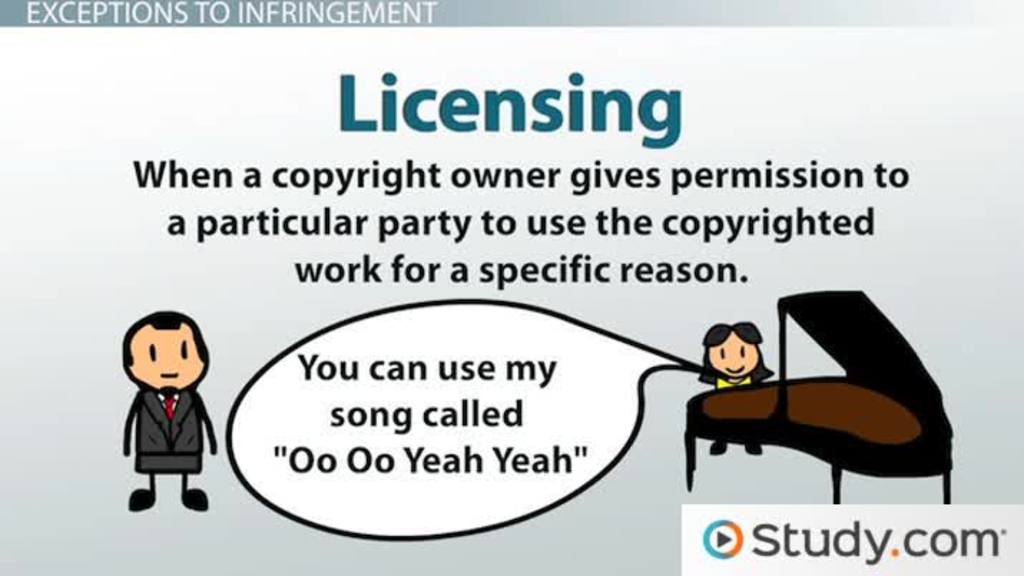Copyright infringement can lead to serious legal issues, especially when using stock images without proper authorization. Adobe Stock provides an extensive library of images, but it is crucial to understand the implications of using these materials responsibly. This guide will walk you through understanding copyright infringement and the common types associated with stock images to help you navigate these challenges effectively.
Understanding Copyright Infringement

Copyright infringement occurs when someone uses a copyrighted work without permission from the copyright holder. This includes unauthorized reproduction, distribution, or display of such works. In the context of Adobe Stock, copyright infringement may happen when users download and use images without obtaining the necessary licenses or permissions. Understanding this concept is essential for anyone who intends to use stock images for commercial or personal projects.
To avoid copyright infringement, it is important to familiarize yourself with the licensing agreements provided by Adobe Stock. Each image comes with specific terms and conditions that outline how the image can be used, whether for commercial purposes, editorial use, or personal projects. Users should always adhere to these guidelines to mitigate the risk of legal repercussions.
Common Types of Copyright Infringement with Stock Images
There are several common types of copyright infringement associated with stock images:
- Unauthorized Use: Using stock images without purchasing the appropriate license.
- Modification and Redistribution: Altering images and redistributing them without proper permission from the copyright owner.
- Commercial Misuse: Using stock images in a commercial context without purchasing a commercial license.
- Failure to Credit: Not giving credit to the photographer or creator when required by the license.
Avoiding these common pitfalls requires careful attention to licensing terms and a proactive approach to copyright management when using Adobe Stock images.
How Adobe Stock Protects Your Rights
When you contribute your creative works to Adobe Stock, it’s essential to know that the platform takes your rights seriously. Adobe Stock employs several measures to help protect your intellectual property, ensuring that its users can confidently share and monetize their content without fear of infringement. Here are some key ways Adobe Stock protects your rights:
- Licensing Agreements: Every time someone downloads your content, they are bound by a licensing agreement that dictates how they can use it. This not only provides clarity for buyers but also delineates the terms of use for your work.
- Content Review Process: Adobe Stock has a rigorous content submission process that includes reviewing and curating assets to ensure they comply with legal standards. This helps reduce the chances of hosting infringing content.
- DMCA Compliance: Adobe reports that they comply with the Digital Millennium Copyright Act (DMCA). If someone finds their work infringed upon, they can file a DMCA takedown notice, prompting Adobe to investigate and potentially remove infringing content.
- Protective Tools: Adobe provides various tools and resources to help content creators understand and manage their rights. These include educational materials about copyright laws and infringement.
By putting these measures in place, Adobe Stock not only secures the rights of its contributors but also maintains a trustworthy marketplace for buyers seeking quality, legally-sound stock assets.
Steps to Take When You Encounter Copyright Infringement
Discovering that your work has been used without permission can be incredibly frustrating. However, knowing how to respond can help protect your intellectual property. Here’s a concise guide on the steps to take when encountering copyright infringement:
- Document the Infringement: Take screenshots and note the URLs where your content is being used without permission. This documentation will be critical in any ensuing conversations or legal steps.
- Check Your Licensing: Ensure that the party using your work has indeed breached the licensing terms. Sometimes, misunderstandings can occur regarding how the content was intended to be used.
- Contact the Party Directly: If you feel comfortable, reach out to the infringing party. Politely inform them of the infringement and ask them to cease use of your work. Many times, this can resolve the issue amicably.
- File a DMCA Takedown Notice: If direct communication doesn’t yield results, you may need to file a DMCA takedown notice with the platform hosting the infringing content. Each platform will have its own process for this, so be sure to follow their guidelines carefully.
- Consult Legal Counsel: If the infringement is significant or if you encounter resistance, it may be wise to seek legal advice. A qualified attorney can help you navigate the complexities of copyright law and explore your options for pursuing action.
Taking these steps can help you regain control over your work and deter potential infringers in the future. Always remember, your rights as a creator are important and worth protecting!
How to Report Copyright Infringement on Adobe Stock
Encountering copyright infringement can be frustrating, especially when it involves your creative work. On Adobe Stock, it’s important to know how to report these issues effectively. Here’s a step-by-step guide to help you through the process:
- Gather Evidence: Before you report anything, make sure you have all the necessary documentation. This can include screenshots of the infringing work, links to the content, and any relevant metadata that proves your ownership.
- Navigate to the Adobe Stock Website: Go to the Adobe Stock homepage. Scroll down to the bottom of the page, where you’ll find the “Copyright” link. Click on it to access the copyright information.
- Fill Out the Infringement Form: Adobe provides a copyright infringement form specifically for this purpose. Be thorough when filling it out; provide your contact information and describe how your work has been used without permission.
- Submit Your Claim: Once you’ve completed the form, submit it to Adobe. Make sure to keep copies of everything you send for your records.
- Wait for a Response: Adobe typically takes the reports seriously and will review your claim. It might take some time, but they will typically inform you of their findings and any actions taken.
By following these steps, you’re taking the right approach to protect your creative rights on Adobe Stock. Always stay vigilant about the use of your work and don’t hesitate to assert your rights!
What to Do If Your Work Is Infringed
Discovering that someone has used your work without permission can be a distressing experience. However, there are actionable steps you can take to address the situation. Here’s what to do if your work is infringed:
- Assess the Situation: Confirm that the work in question is indeed yours and detail how it was used without authorization. Take note of the specifics, including locations, usage, and the individuals or organizations involved.
- Contact the Infringer: Sometimes, a simple communication can resolve the issue. Politely reach out to the person or entity that has used your work, clearly stating your ownership rights and requesting them to cease usage or credit you appropriately.
- Consider Legal Action: If the infringement continues or the infringer is uncooperative, you may need to seek legal advice. Consult a lawyer who specializes in intellectual property rights to explore your options.
- Document Everything: Keep records of all communications and actions taken regarding the infringement. This documentation can be helpful if you pursue legal action.
- Review and Adjust Your Licensing: To prevent future issues, consider how you license your work. Platforms like Adobe Stock offer various ways to protect your content and ensure you’re compensated for its use.
Responding swiftly and effectively to copyright infringement not only protects your work but also sets a standard for how your rights as a creator should be respected. Stay proactive and ensure your creative efforts are safeguarded!
Legal Considerations Surrounding Copyright Infringement
When it comes to copyright infringement, it’s crucial to understand the legal implications surrounding the use of stock images, including those from Adobe Stock. Copyright law is designed to protect the rights of creators, ensuring they receive credit and compensation for their work. Here are some key legal considerations to keep in mind:
- Understanding Copyright: Copyright automatically applies to any original work of authorship, meaning that stock images are protected from the moment they are created. This protection grants the creator exclusive rights to use, reproduce, and distribute their work.
- Licensing Agreements: Adobe Stock provides various licensing options—such as standard and extended licenses—that dictate how you can use the images. Always ensure you fully understand the terms of the license before making use of any stock asset.
- Fair Use Doctrine: In some cases, you might hear about the ‘fair use’ doctrine, which allows limited use of copyrighted material without permission. However, this is a complex legal area and often does not apply to commercial use, so tread carefully.
- Infringement Consequences: If you’re found to be infringing copyright, potential consequences can include financial penalties, legal fees, and the obligation to cease using the infringing material. It can be costly, both financially and reputationally.
To navigate these issues effectively, consider seeking legal advice, especially if you plan to use stock images in a business context. Understanding your rights and responsibilities will help you avoid accidental infringements and ensure that you respect the artists behind the content you love.
Best Practices for Using Adobe Stock Safely
Using Adobe Stock can be an excellent way to elevate your projects, but it’s essential to utilize it wisely to avoid copyright issues. Here are some best practices to keep in mind:
- Read the Licensing Agreement: Always double-check the licensing terms associated with any stock image you intend to use. Understanding what is allowed and what isn’t will save you from potential headaches later on.
- Keep Records: Maintain thorough records of the images you download, including the associated licenses. This documentation can be invaluable if any questions or disputes arise down the line.
- Avoid Modifications: Unless the license specifies that you can modify the images, it’s best to use them as they are to stay within the bounds of your agreement. Modifications can alter the terms of use.
- Stick to Approved Uses: Ensure that your use of the images aligns with the permitted activities outlined in the license; this includes avoiding commercial use if the image is licensed for personal use only.
- Attribution: While Adobe Stock licenses typically don’t require attribution, always check the specifics. If attribution is required, make sure you give proper credit to the creator.
By following these best practices, you can use Adobe Stock confidently and creatively, ensuring that you respect the rights of the creators while minimizing your risk of copyright infringement.
Resources for Learning More About Copyright Law
Understanding copyright law is crucial for anyone using creative materials, including stock images from platforms like Adobe Stock. Knowledge of copyright not only helps you avoid legal troubles but also empowers you to protect your own work. Below is a curated list of resources to deepen your understanding of copyright law:
- U.S. Copyright Office:
The official government site provides comprehensive resources on copyright laws, including registration, fair use, and infringement.
- Creative Commons:
This organization offers various copyright licenses that allow creators to share their works legally while maintaining certain rights.
- Digital Media Law Project:
A resource dedicated to providing free legal information regarding the use of digital media. They cover topics like copyright infringement and fair use.
Books on Copyright:
| Title | Author | Publisher |
|---|---|---|
| Copyright Law in a Nutshell | Arthur R. Miller | West Academic |
| The Copyright Handbook: How to Protect Your Music, Movies, Books, and More | Stephen Fishman | Nolo Press |
These resources can help you navigate the complexities of copyright law and effectively handle copyright infringement issues when using Adobe Stock or any other creative platforms.


